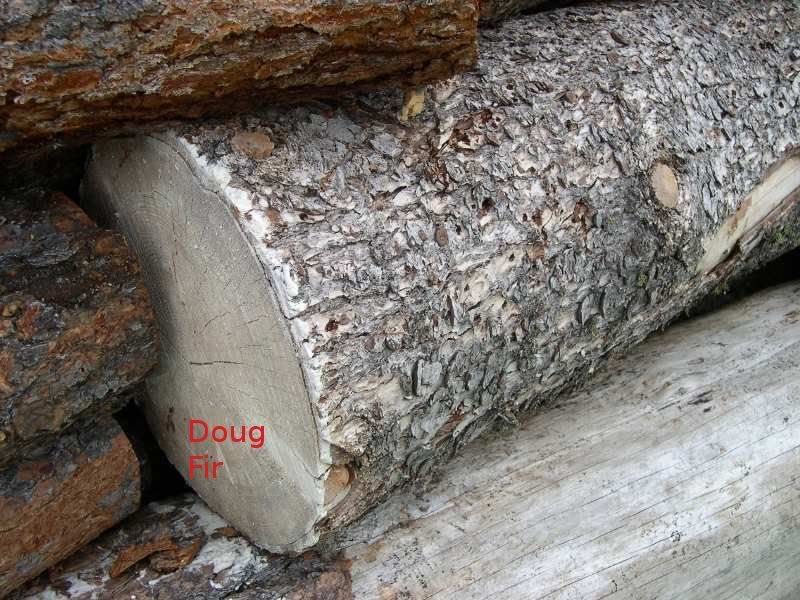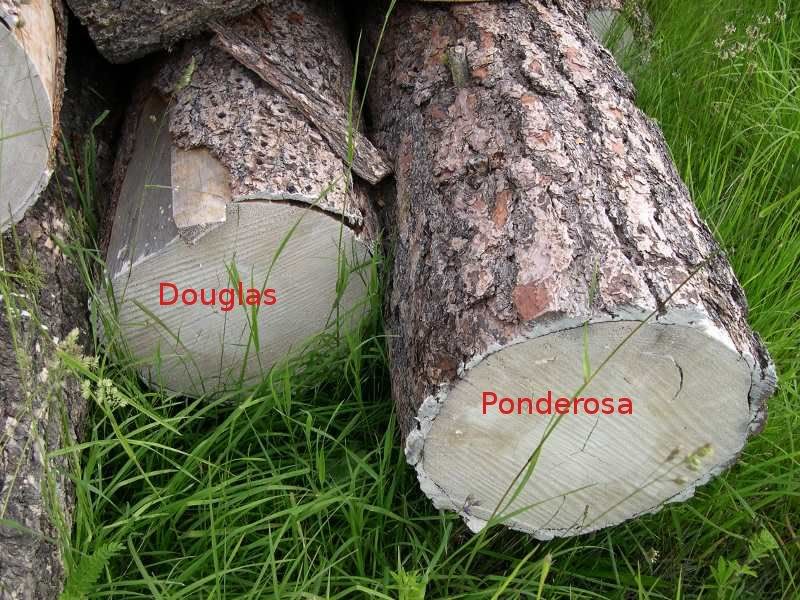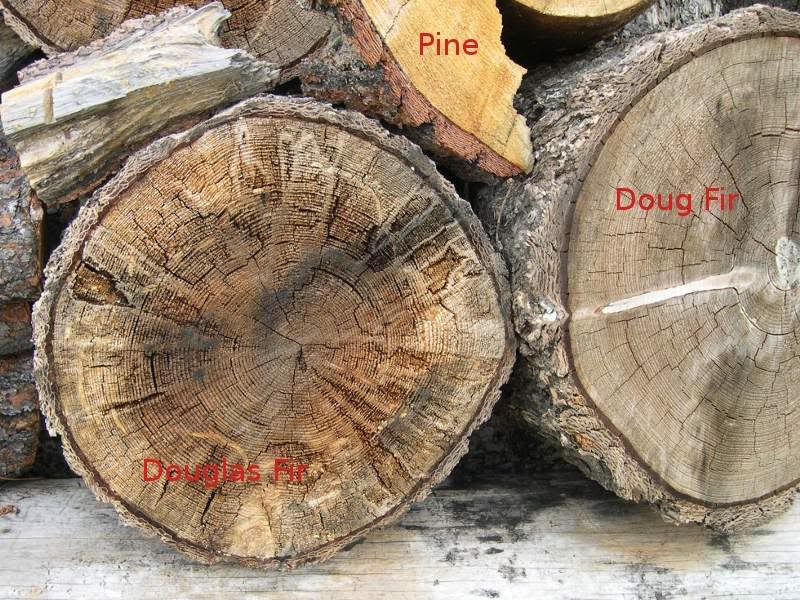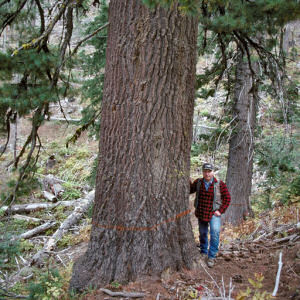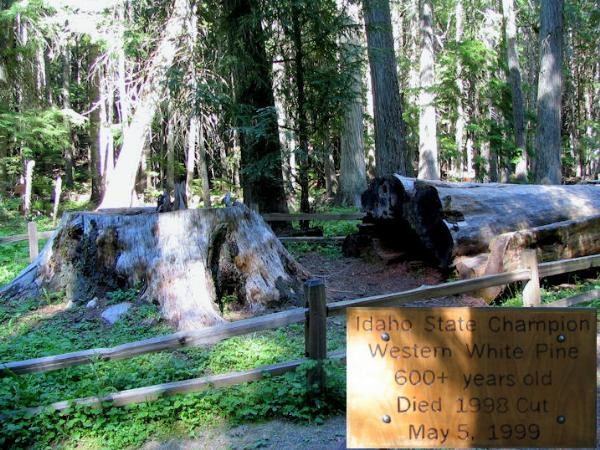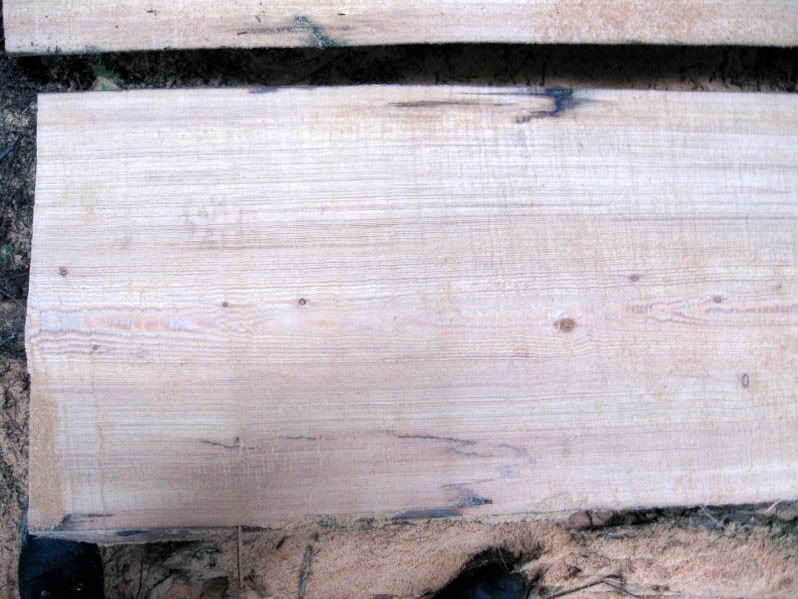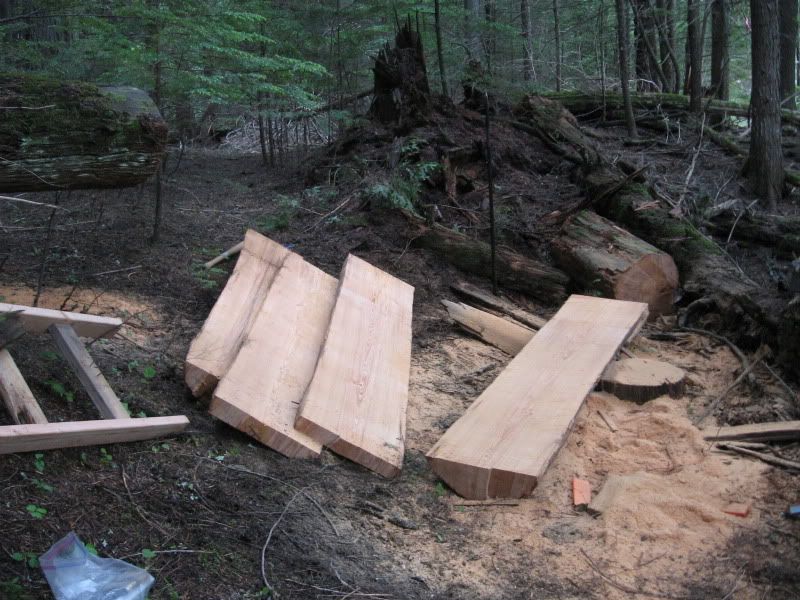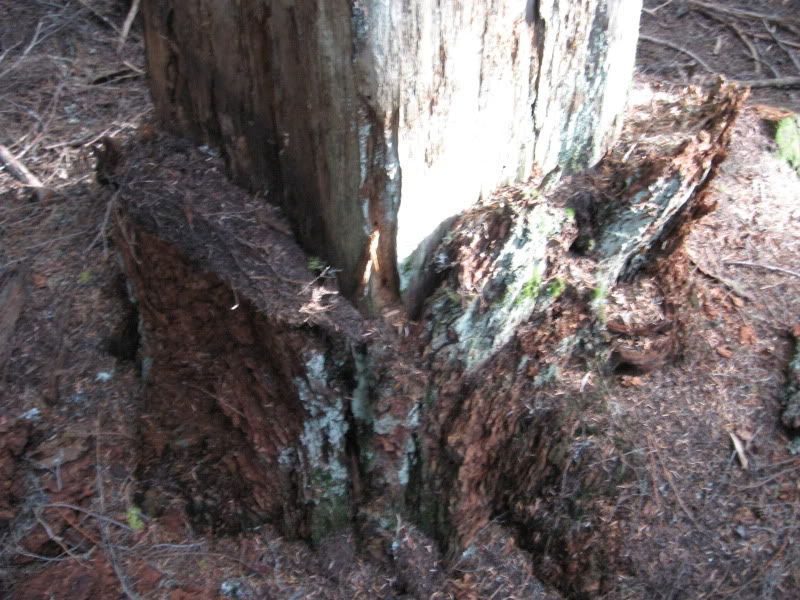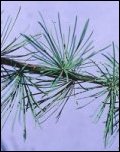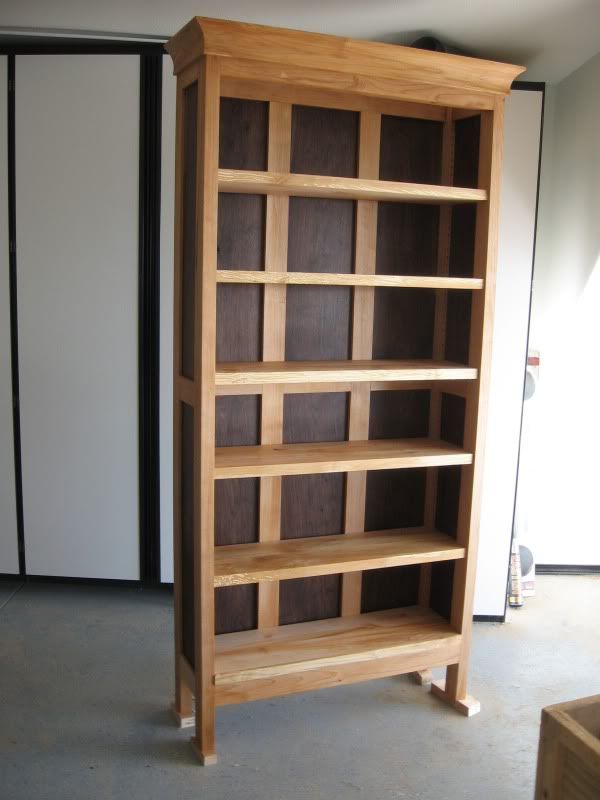The thick, brown bark on the stump looks more like Ponderosa to me. Or maybe white pine ?? -- it's been a long time since I've been up in white pine country. Obviously, photos are not the same as seeing it in person. If we could see it in person, we wouldn't be guessing.
The species of Doug Fir that grows in Idaho is different from the Doug Fir on the west coast. Rocky Mountain Douglas is not as big and the bark is not as thick. Bark is typically 1/2" thick, maybe 1" on very large trees (and 24" is large in 2nd growth). It is not brown, but charcoal or grey,. with relatively small scales.
Here's a doug fir in my log pile (the end is coated with latex paint, in case your were wondering). It's bark is maybe 3/8" thick. Yes, it is starting to peel in spots.
A doug fir next to a ponderosa. The ponderosa bark is thick and brown/orange, similar to the bark on the stump in the original post.
The cookie on the left came from a snag that I felled last fall, about 24" diameter. The snag still had all its bark, yet it turned out to be completely rotten.
BTW, I may be the only person in Idaho who refers to it as Douglas Fir. The locals go by its nickname "red fir." It is definitely Douglas, with the easily identifiable cone, but it is a different species than the coastal Douglas. Not as big, and the bark is thinner.
I wish I had pictures of the 50 year old fence posts that I cut up for firewood. Looked rotten on the outside, but the inside was solid and unmistakably orange. Doug fir weathers well if it can breathe. Lay it on the ground, or smother it with wet bark, and it rots quickly.
Having said all that, DaltonPaul's place is a 2 - 3 hours north of me, in white pine country. They get much more precip than I do, almost like the coastal forests, with moss hanging from the trees. Maybe the doug firs up there grow bigger and have thicker bark than my doug fir ?
Let's review the possibilities:
Hemlock -- boards could pass for hemlock, but hemlock rots quickly.
Cedar -- DaltonPaul has milled cedar logs on this property, so if the mystery log were cedar, you'd think he'd recognize it.
Doug Fir -- not orange like Douglas, and douglas is not especially rot resistant, though it weathers well providing it can breathe.
Tamarack -- boards could pass for tamarack, and tamarack is rot resistant -- but I thought tamarack was a relatively small tree ? ? ?
White pine -- they used to grow HUGE in N. Idaho before the blister rust came along. (One near Elk City is 219 feet). Known for long straight trunks free of branches. But what do the boards look like ? I didn't think it was rot resistant ?
Here's a stolen pic of a white pine. I've seen bigger.
A stolen pic of white pine bark. Looks like the bark in the original post, eh ?
A stolen pic of a fallen white pine log. I think I've been to this place -- in the St. Joe forest, between Potlatch and St. Maries.
At the moment, I'm leaning away from tamarack -- because it is too small -- and toward white pine. But there's no way to be sure just from a few photos.





